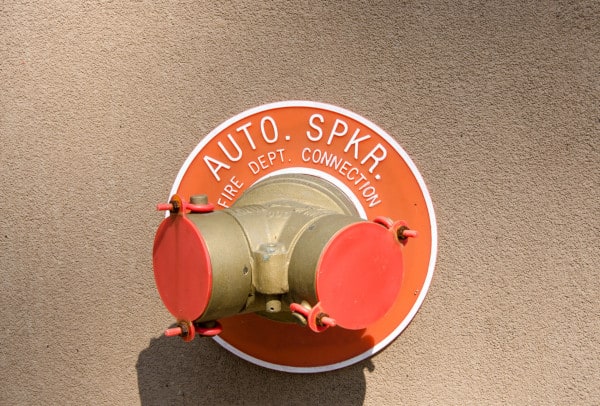Keep those fire department connections covered and compliant with caps or plugs
Fire department connection (FDC) caps or plugs are used to cover the inlets on an FDC, which is the fitting that your local fire department connects their fire hoses to during a fire. FDCs can be located both inside and outside a building and are used to deliver a water supply that feeds either a sprinkler system or an internal fire hose connected to a standpipe system. If your building is equipped with these connections, they have to be covered to prevent debris from accumulating inside the inlet and impeding the delivery of the water — while still providing the easiest possible access for the fire department.
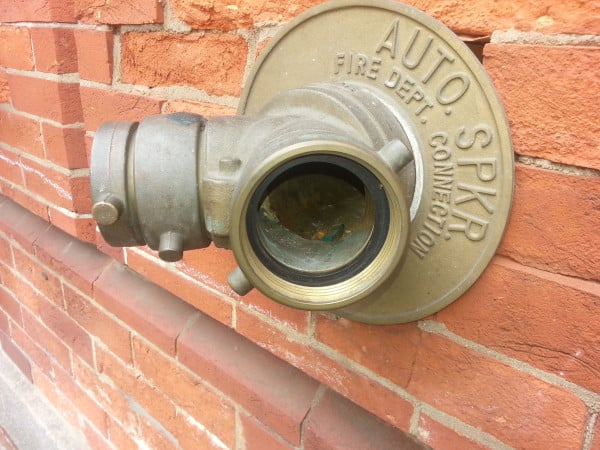
See the junk in the exposed FDC above? When an FDC inlet is left uncovered, it is prone to collecting things.
In a fire emergency, the fire department will connect a hose between a pumper truck full of water and the FDC to pump water into the building, supplementing the building’s onsite supply, serving as the only supply for certain standpipe systems, and/or pressurizing the sprinkler or standpipe system. If debris is inside the FDC inlet and the water is pumped in, that junk ultimately moves its way through the system and can disrupt water pressure and a hose or sprinkler’s operation.
Fire department connection plugs and caps frequently go missing
Every FDC, when initially installed, comes standard with “plate and plugs,” industry lingo for the circular “Auto Spkr” plate identifying the FDC (see “Auto Spkr” in the image of the FDC above) and the metal plugs to protect the inlets. The most common reason for missing plugs is, sadly, thieves; we noticed a significant uptick in missing plugs following the Great Recession. It’s just too easy for brass thieves to remove brass models and get a quick payday. Other, less nefarious reasons are fairly common, too. For example, breakable caps can loosen over time and fall off or are never replaced during testing of the standpipe system.
There is another reason for making sure your FDCs are covered. In most jurisdictions, an annual fire inspection is required. One of the most common citations received by our customers is missing FDC caps or plugs. Usually, these citations come with a remedy period: fix it within 7 days and the authority having jurisdiction (AHJ) will lift the citation. Have experience with this? You’re not alone.
If you need to get your system compliant, scroll to the bottom to see your options, most of which are cheap enough to have a few extras on hand to avoid citations in the first place!

Are all fire department connection covers the same?
No; they differ in style, size, and type of material. FDC covers come in two main styles, commonly referred to as “breakable caps” or “plug and chain.” And some versions are lockable and with or without a chain.
A plug is made of brass, aluminum, or cast iron and requires the use of a wrench to remove it. FDC breakable caps are designed to be removed by—you guessed it—breaking the caps, usually with the butt of a fireman’s ax. Since FDC fittings are female threaded, as called for by the National Fire Protection Association (NFPA), FDC plugs are designed to fit the FDC’s specific threads. Always check with your local fire department or inspector to be sure your FDC connections will match up with their equipment. FDC caps, in comparison, use eye bolts to connect to the fire department connection inlet’s swivel, as demonstrated in the image above.
For an in-depth guide to sizing, read this guide.
The materials used in these covers include brass, cast iron, aluminum, or plastic. Plugs are often made of brass, though there are cast iron options and cheaper aluminum alternatives have been introduced into the market. Plastic FDC caps are also common and the least likely to be stolen by thieves looking for recyclable metals. Their lower cost also makes keeping a few on hand in case of damage or theft a cost-effective addition to building safety. But note that not all jurisdictions favor breakable caps, with some only allowing them on FDCs that are in a secured area. Check with your local fire department!
There is also another type of covering for a wholly different variety of FDC: Storz caps (or “plugs,” if you prefer). Storz FDCs have a threadless coupling suited for compatible fire hoses or standard threaded hoses with adapters. They are gaining popularity with fire services, as it’s quicker to connect hoses to them than traditional couplings. Read this to learn more about Storz FDCs and caps. But the big takeaway is this: if you have a Storz FDC, you’ll need a Storz cap!
Now you know your options and why it’s important to keep your FDCs covered. Check out the table below to find the option that is best for you! All FDC caps and plugs are in stock and ready for immediate shipment.
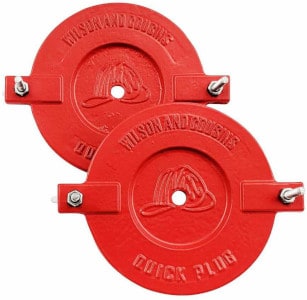
Breakable FDC Caps |
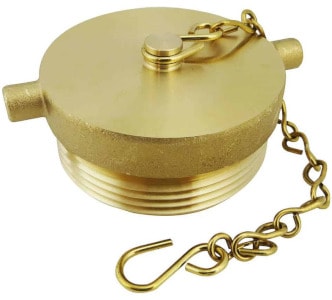
FDC Plugs 1.5″ Brass | 2.5″ Brass | 2.5″ Chrome-Plated Brass | 2.5″ Aluminum | 2.5″ Adjustable Plastic | 3″ NYFD Green | 3″ NYFD Yellow | 1.5″ Brass | 3″ NYFD Paintable |
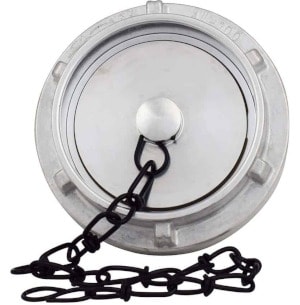
Storz Caps |
|---|


